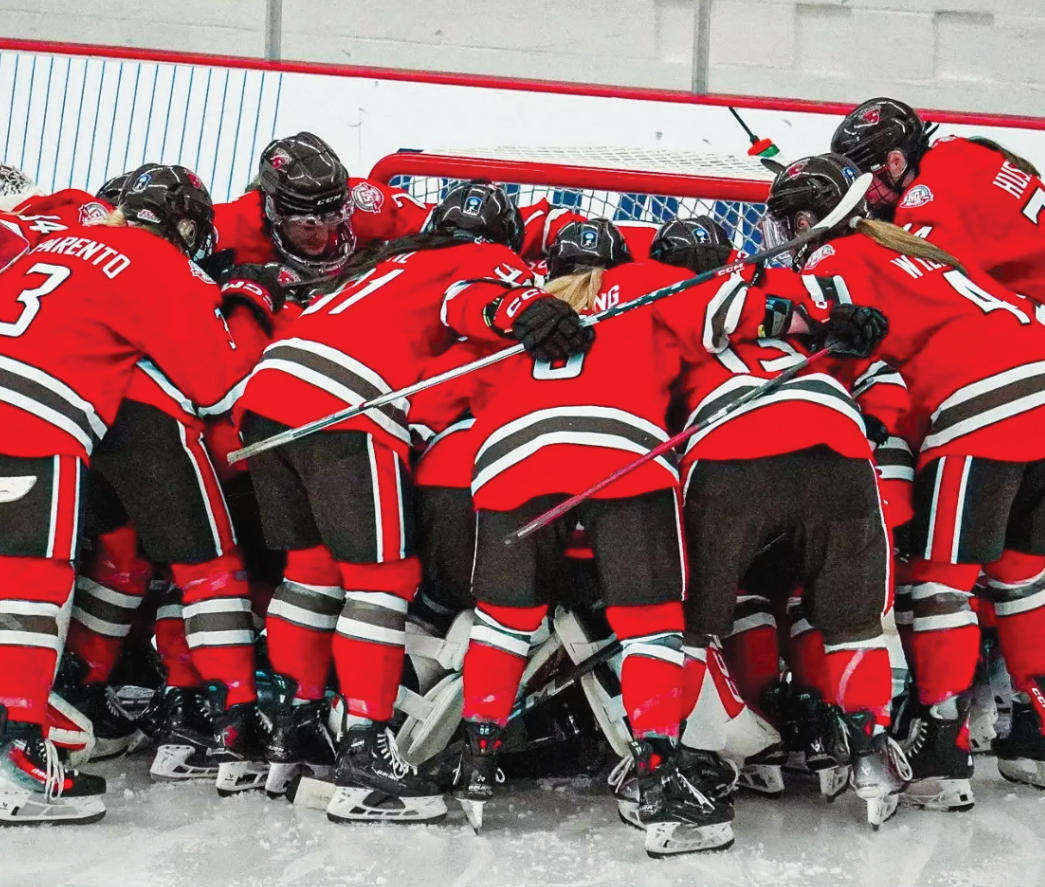The Impact of NIL on SLU Hockey
St. Lawrence men’s and women’s hockey teams face unique challenges in recruiting and retaining top talent compared to other Division I schools. Newfound name, image, and likeness funding (NIL) for Division I athletes, in addition to the increasing popularity of the transfer portal, have added to the complexities. However, the men’s and women’s coaching staff have found ways to maintain competitive rosters by providing their athletes with benefits that a smaller institution such as SLU has to offer.
SLU has a small student body and rural location with challenges many larger, more urban schools don’t face. This claim is supported by Chris Wells, head women’s hockey coach, when discussing how NIL funding may put SLU at a disadvantage compared to other universities. “We got to work hard,” he said. “We probably aren’t going to get the players that want big NIL money.”
The transfer portal has also become a common term in college athletics, creating complicated situations for coaches looking to maintain a strong roster. Brent Brekke, head men’s hockey coach, has also expressed challenges relating to this topic. “The transfer portal is here to stay. It’s not going anywhere whether you like it or don’t like it,” he said. “I don’t think it helps the smaller schools like ourselves. We’re not a school that has a lot of NIL money.”
Some recruits might not prefer the small, tight-knit and rural environment that SLU provides. Kassidy Lawrence ’27, goalie on the women’s team, mentions how she has seen this occur firsthand. “There are some girls I would tour around, and they’d be like: ‘This school is super cute,’ – they’d always use the word cute,” she said. “They’d all be like, ‘I kind of want to go to a bigger school,’ because they always compare it to schools like Penn State and [Boston University].”
The hockey programs have worked past these obstacles, fielding competitive teams every year. Routinely noted by both Wells and Brekke are the traditions, history and facilities that make SLU hockey what it is today. “What we have here continues to take on more of a specialness,” Wells states. “Things are becoming much more materialized––we have our rink and its great renovations over the last five years, which were able to keep its tradition.”
Brekke is also adamant about what makes SLU a great place for hockey. “It’s a combination of the historic rink and the tradition and success for decades and decades,” he said. “It’s a program that’s been around for a long, long time, and we have an iconic building [Appleton Arena] that I think is pretty unique and special.” According to Brekke, all these factors play an important role in the recruitment process when SLU may lack size and NIL offerings compared to larger universities.
Evan Orloff ’28, a member of the men’s hockey team, also feels that SLU has many benefits to offer that may help recruitment. During his recruitment, he noted how SLU’s exceptional alumni network created a sense of security in his decision. “Anyone I told that I was going to SLU somehow always knew someone that had gone here,” Orloff said. “Hearing those things was like, ‘alright, this is the place for me.'” He also feels that the small community and rural setting help attract students like himself who enjoy the outdoors and the quiet atmosphere.
SLU hockey takes on a different approach compared to recent trends of big NIL deals and frequent transfers. Brekke remains firm in his belief of developing a strong culture within his program. “I’m a true believer in culture wins championships,” he said. “We have to find kids that truly believe in what we believe in as a coaching staff – that’s the culture of building from within.”
Kassidy Lawrence supports this idea when asked about what has contributed to recent success among the women’s team. “For our team, it’s been the drive from the older girls,” she said. “With them having that drive, the incoming classes all want to be their best selves – everyone pushes everyone.”



